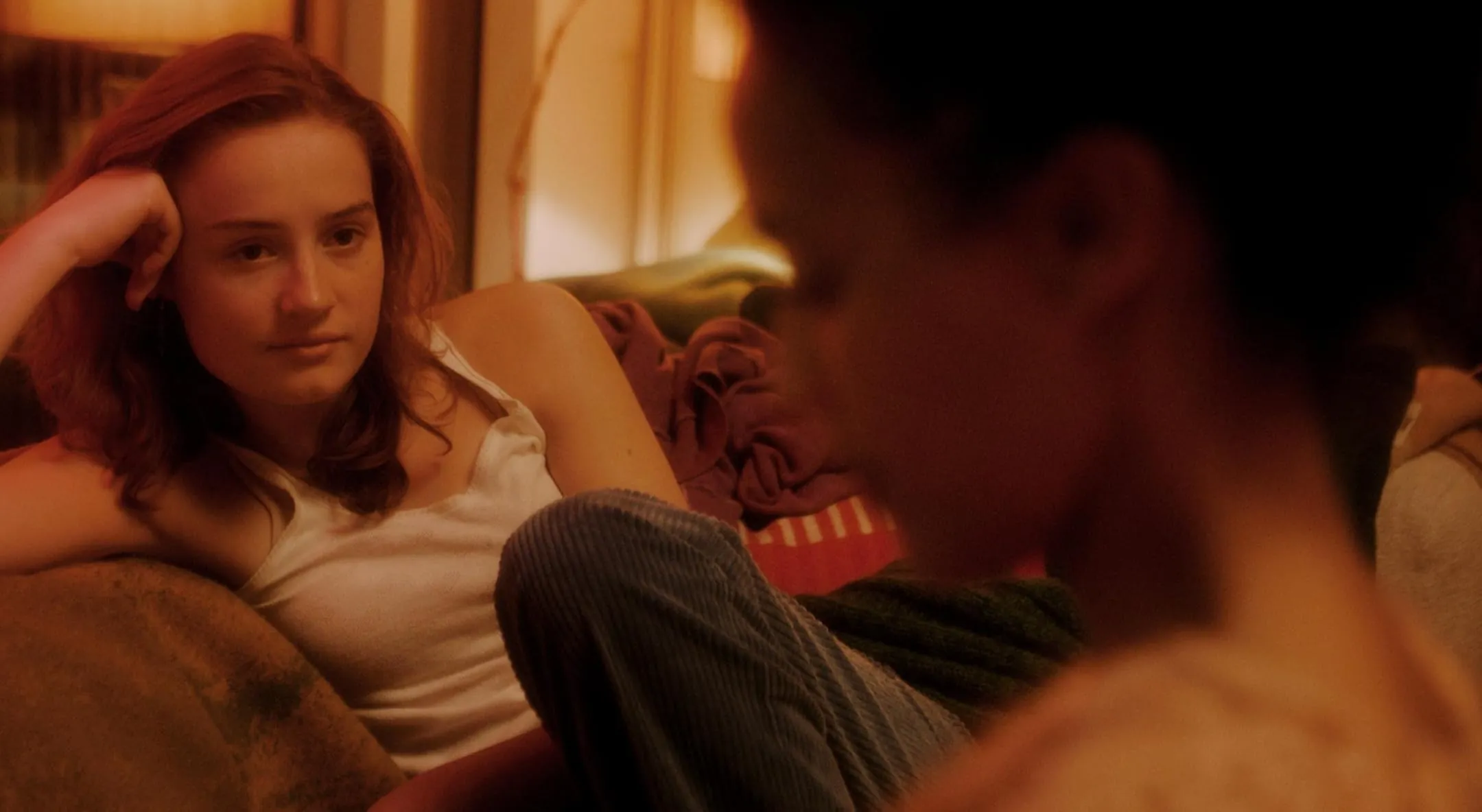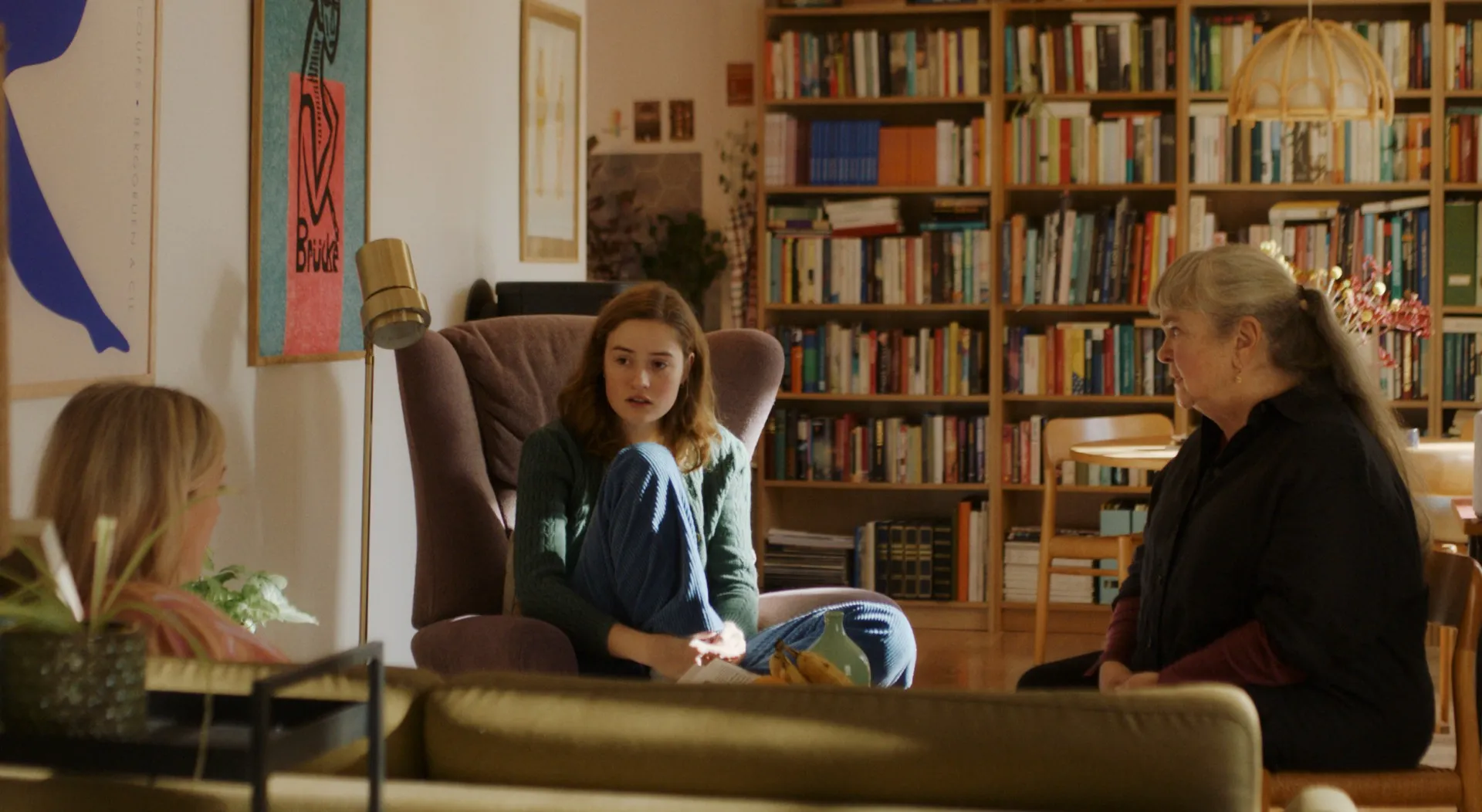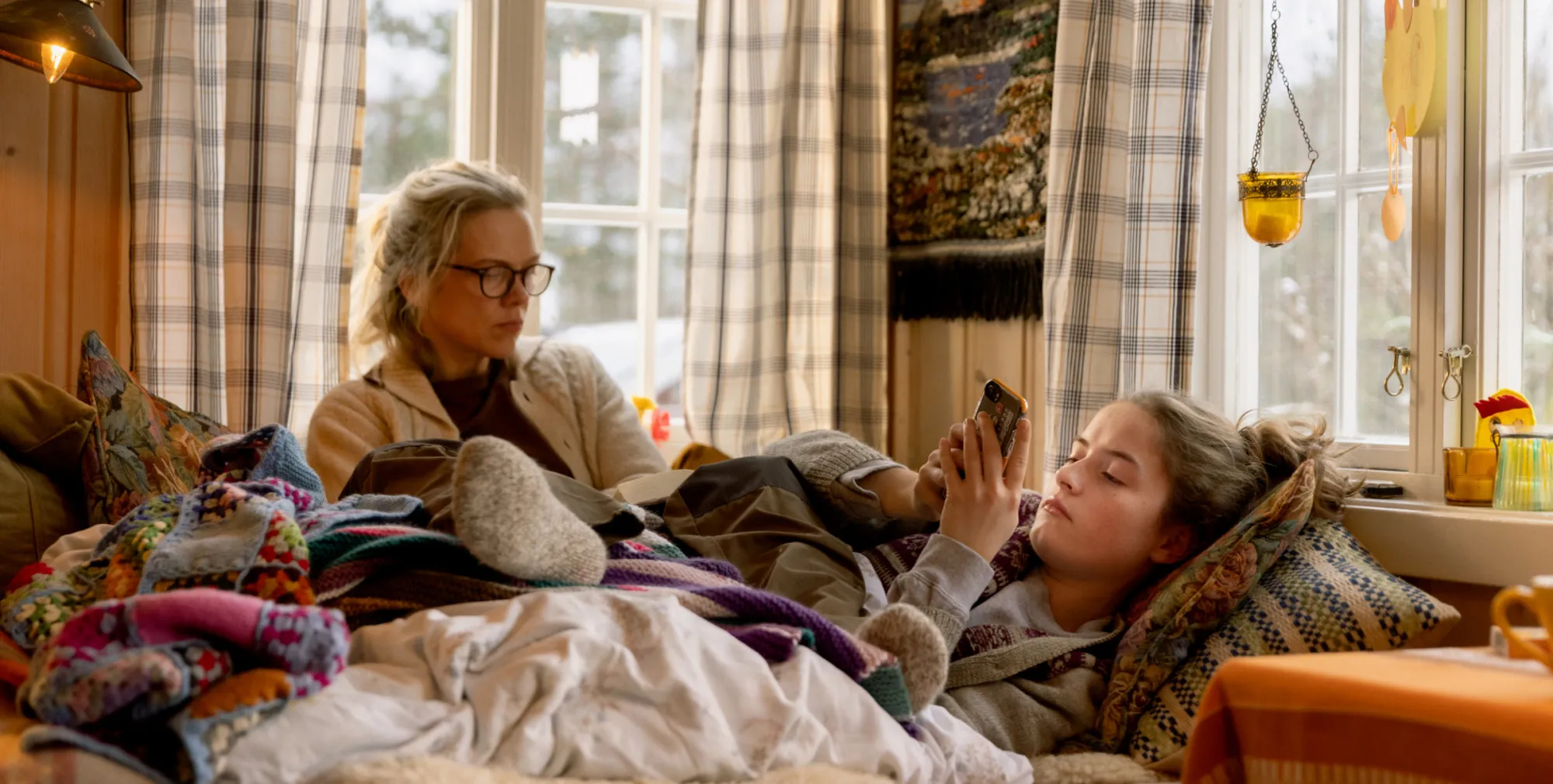“Dreams” introduces us to a poignant tale of first love and personal discovery, the final chapter in a carefully constructed thematic series. The film follows a young protagonist as she recounts her experiences with a captivating mentor, setting up a narrative that is both intimate and thoughtfully crafted.
Set against the backdrop of Oslo, the city is presented not simply as a locale but as an active element that influences mood and atmosphere. The storytelling approach uses an introspective voiceover by Johanne, which gives the film a reflective and personal air.
Her narration lends insight into her innermost thoughts, presenting moments of vulnerability alongside a measured confidence. This method invites viewers to engage with the text in a straightforward manner, making the film accessible to those who appreciate clear storytelling paired with a strong sense of place and a personal point of view.”
Narrative Structure and Plot Development
The film structures its narrative in an unconventional fashion, beginning with a glimpse of early events that later shift in time. A deliberate pause in chronology is introduced, followed by fresh information that reshapes what came before.
This layered format creates an engaging effect, prompting viewers to piece together moments that span both distant and recent memory. The approach invites the audience to consider how seemingly separate fragments form a coherent story, all while new details steadily emerge to challenge initial impressions.
Central to the film is the reflective monologue provided by Johanne. Her voiceover does more than recount her emotions; it serves as a personal record that questions the reliability of memory. This narrative device offers intimate glimpses into her internal world, recording her feelings with a mix of honesty and skepticism.
The voiceover invites the audience to compare the raw experience of living through events with the act of writing them down, blurring the line between personal recollection and creative expression. This method brings an engaging and personal texture to the storytelling.
Notable moments in the film include the deep connection established between the student and her teacher, an unexpected visit to the teacher’s home, and the gradual disclosure of Johanne’s written memoir. Each reveal reshapes the viewer’s understanding, prompting fresh reflections on the unfolding narrative.
As the film gradually discloses these significant events, it offers a complex picture that challenges straightforward interpretations and encourages a reassessment of the characters’ motivations and emotions. The careful timing of these revelations keeps the audience invested in the evolving tapestry of the story.
Character Analysis and Dynamics
Johanne’s character emerges as a study in inner struggle and quiet determination. She grapples with feelings that shift rapidly, capturing the tenderness and uncertainty of first love. Her reflective nature provides a window into the tender moments of self-examination and the excitement that accompanies youthful passion.
The film portrays her as someone whose emotional growth is marked by both vulnerability and a persistent drive to understand her own identity. Her inner thoughts, conveyed with a soft-spoken sincerity, invite the viewer to share in the complexity of a mind caught between raw feeling and intellectual reflection. This portrait of a young person confronting intense emotions reminds me of the spirit found in certain French New Wave characters, where the internal world of the individual takes center stage.
Johanna plays a multi-faceted role, serving as both mentor and a spark for change in Johanne’s life. Her interactions are charged with a gentle magnetism that complicates the student-teacher dynamic. Though her intentions remain subtly ambiguous, every encounter with Johanne leaves an impression that suggests a deeper personal impact. The interplay between guidance and allure is handled with a sensitivity that avoids easy answers, inviting viewers to interpret the nuances on display.
Karin and Kristin provide additional layers to the narrative, each reacting to Johanne’s experiences in ways that highlight generational contrasts. Karin, with her background in poetry, contributes a reflective and artistic influence that colors the unfolding story. Meanwhile, Kristin offers a practical response, reflecting the tension between emotional openness and a protective stance. Their differing attitudes amplify the film’s portrayal of familial bonds, making the characters’ exchanges feel rich and honest without resorting to simplistic portrayals.
Themes and Symbolism
The film presents a sensitive portrayal of first love that transforms Johanne in unexpected ways. Her encounter with early passion opens a window into both exuberance and the sting of loss, offering a vivid picture of youthful emotions as they alter her view of herself and the world around her.
The narrative captures the thrill of new desire alongside moments of reflective sorrow, evoking memories of films from the French New Wave where personal growth and the pains of maturation were often explored with honesty and care.
A key aspect lies in the tension between living an experience and recording it in writing. Johanne’s decision to commit her feelings to paper brings into focus the contrast between immediate sensation and the reflective nature of documentation. Her written memoir acts as a mirror that both clarifies and distorts her personal memories. This contrast raises thoughtful questions about how the act of writing might alter the authenticity of an experience, inviting viewers to consider the power of storytelling in reshaping personal history.
The narrative shifts attention to the intricate roles that female desire plays within relationships. By centering on characters who express their longing and vulnerability, the film offers a candid look at how emotional connections can disrupt established power roles. The portrayal encourages a rethinking of traditional expectations, presenting interactions that are both tender and challenging. In doing so, the film creates a space for reflection on the evolving nature of interpersonal dynamics and the celebration of individual agency.
Visual elements such as knitting, soft textiles, and moments of dance appear repeatedly, each serving as a symbolic thread in the film’s fabric. One memorable scene—featuring a dance against a natural, open setting—captures the inner tensions that the characters experience. These images work in concert with the narrative to offer layers of meaning that invite personal interpretation. Their presence deepens the overall impact, turning everyday gestures and objects into markers of emotional complexity and quiet resilience.
Cinematography, Sound, and Visual Style
The film opts for a visually immersive approach, using warm and radiant light to create a dream-like atmosphere. A carefully chosen color palette—featuring soft pastels alongside deeper, saturated tones—sets a mood that mirrors the reflective nature of the narrative.
The camera work is measured and thoughtful, capturing both the sweeping urban landscape and intimate character moments. Each frame appears crafted to enhance the viewer’s connection with the unfolding emotional layers.
Far from serving as a simple backdrop, Oslo contributes actively to the film’s storytelling. Modern architecture and recognizable cityscapes offer more than aesthetic appeal; they mirror Johanne’s inner state and emotional shifts. The urban environment reflects her moments of hope, introspection, and uncertainty. Public spaces and narrow alleys become symbols of personal transformation, hinting that the city itself shapes the character’s evolution.
The musical score plays a vital role in setting the film’s emotional tone. A combination of minimalist piano and gentle, live jazz-inspired rhythms guides the viewer through scenes that shift between quiet melancholy and subtle optimism. The sound design works in harmony with the visual cues, enhancing the reflective mood and offering a sonic counterpoint to the unfolding narrative. This careful interplay between audio and image creates an engaging sensory experience.
Recurring images, such as spiraling staircases, brief dance sequences, and the texture of knitted fabrics, add layers of meaning throughout the film. These visual motifs serve as markers of personal discovery and emotional complexity. Each symbol contributes to a unified visual statement that aligns with the film’s thematic focus on internal growth and the delicate interplay between memory and experience.
Directorial Style and Narrative Techniques
Haugerud shows a remarkable skill in blending light-hearted moments with scenes of quiet introspection. He manages to insert brief, gentle humor into scenes where characters reveal their vulnerabilities.
This thoughtful touch keeps the narrative lively while preserving an earnest tone in moments of self-examination. It reminds me of certain sequences in films by French New Wave directors, where a subtle smile or offhand remark brings a human warmth to otherwise intense scenes.
The conversation among characters carries a refined rhythm, drawn from classic literary influences. Each line feels carefully crafted, echoing the clear, measured dialogues found in works by Godard and Truffaut. The script’s language opens a window into the characters’ inner lives, offering insights that feel both natural and thoughtfully considered. This approach enriches the narrative, allowing the viewer to sense the underlying emotions without overwhelming the scene.
Haugerud employs a voiceover that guides the viewer while prompting reconsideration of earlier scenes. The non-linear structure unfolds key moments gradually, prompting fresh interpretations of events previously seen. The voiceover articulates internal emotions and provides a reflective counterpoint to the visuals. Techniques reminiscent of modern storytellers like Noah Baumbach surface here, presenting a modern twist on memoir-like storytelling that ties personal memory to the visual narrative.
The combination of these stylistic choices leaves a strong mark on those watching. Every humorous beat and quiet moment of self-reflection sparks memories of personal experiences with early love and growth. The unfolding narrative invites a close personal connection, urging viewers to recall moments of both joy and uncertainty. The experience feels accessible while carrying a rich depth of emotion that lingers in the mind.
The Review
Dreams
A meticulously crafted film that merges humor with heartfelt introspection, offering a compelling exploration of first love and personal growth. The creative narrative structure, distinctive voiceover, and evocative visual style create a memorable cinematic experience.
PROS
- Thoughtful narrative structure
- Visually engaging imagery
- Poignant voiceover narration
CONS
- Pacing may feel slow for some viewers
- Nonlinear structure can be challenging




















































